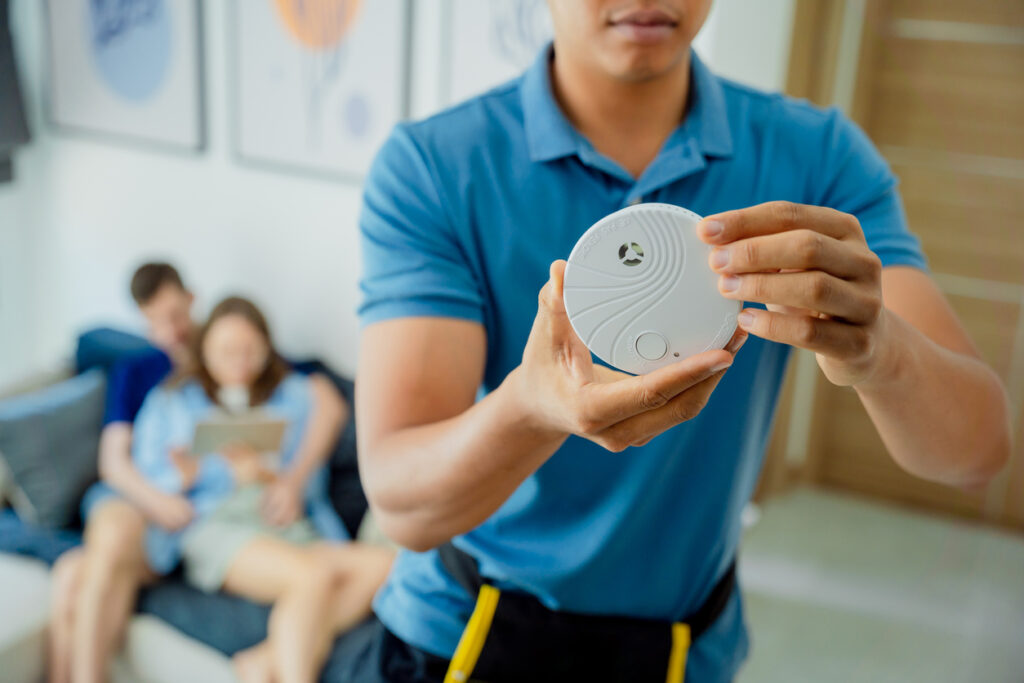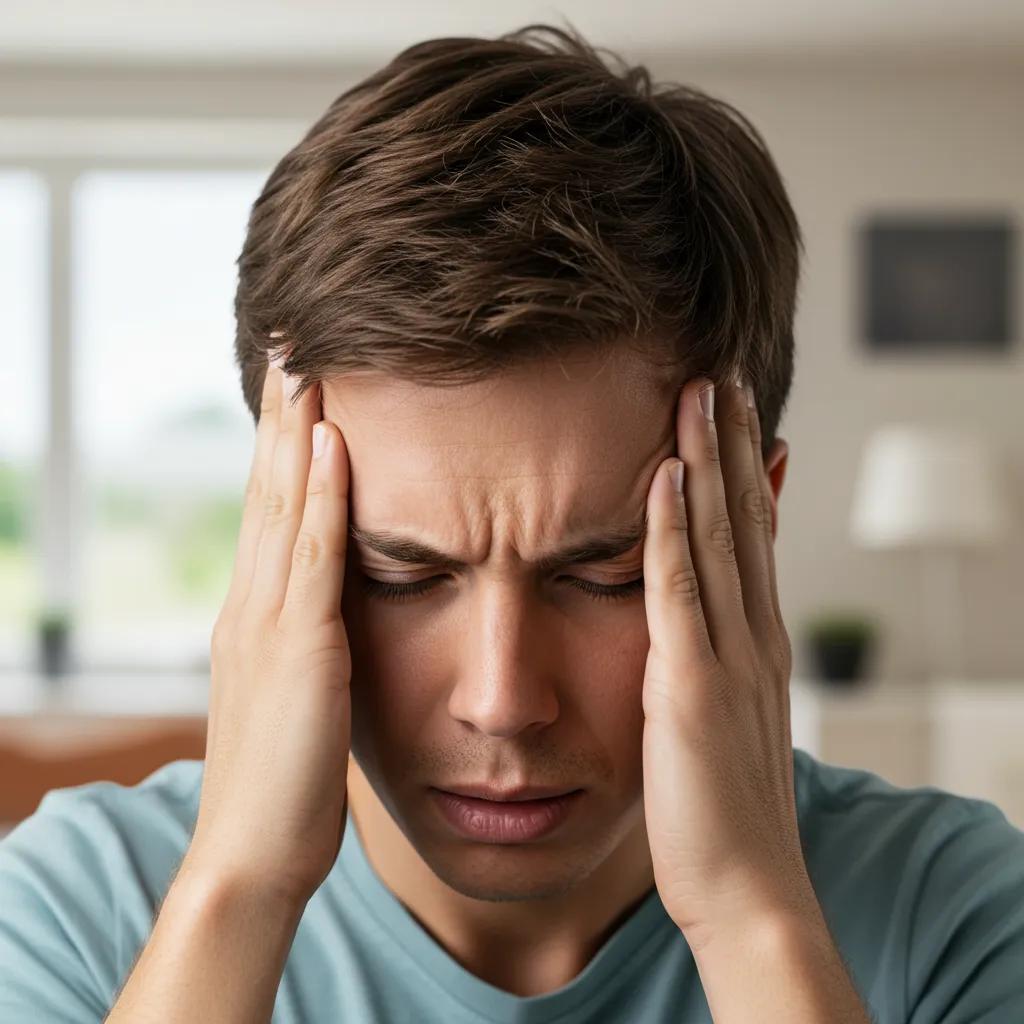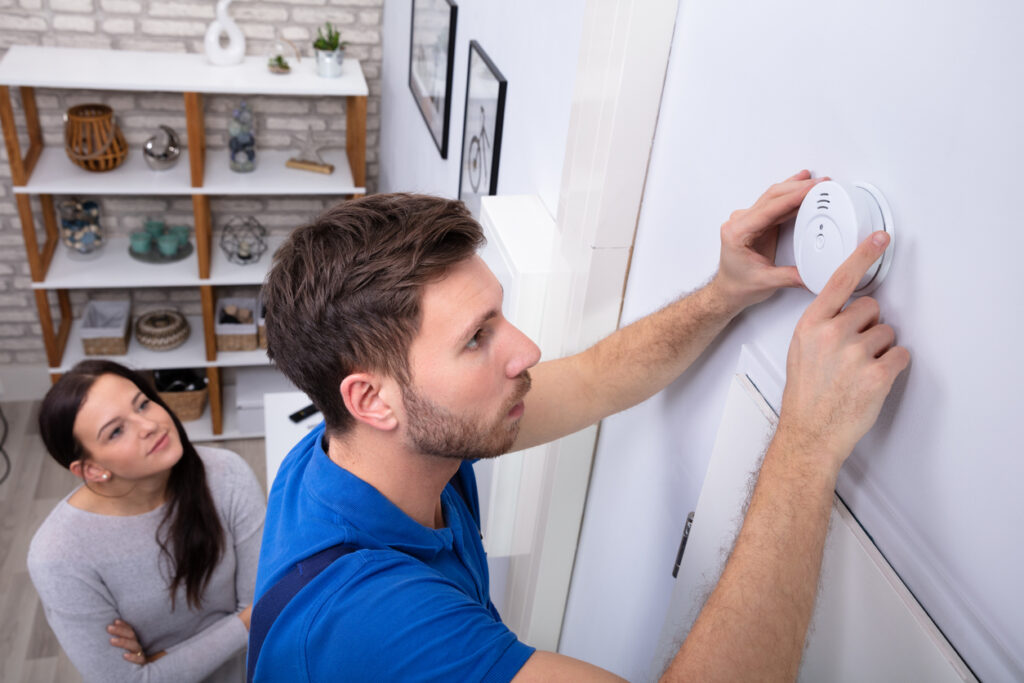
Guard Your Home Against Carbon Monoxide Dangers: Your Essential Safety and Prevention Guide
Carbon monoxide (CO) is an invisible gas that poses a significant threat to homes and small businesses throughout California. Understanding its silent danger and implementing proven prevention strategies can be the key to keeping your loved ones safe. This guide will walk you through what carbon monoxide is, how it impacts health, and the reliable detection methods available. We’ll cover essential HVAC maintenance practices that prevent leaks, outline California’s legal requirements for detectors, and help you choose the best alarm for your property. You’ll also discover clear signs of CO exposure and crucial steps to take in an emergency. By adopting practical daily habits and establishing an emergency response plan, you can confidently protect your home or workplace. Whether you live in Fremont or operate a business in Pleasanton, these insights will empower you to prevent CO poisoning effectively.
What Is Carbon Monoxide and Why Is It So Dangerous in Homes?
Carbon monoxide is a toxic gas produced when fuels don’t burn completely. Because it’s colorless and odorless, it can go undetected without a special detector, creating a silent risk wherever fuel-burning appliances or enclosed engines are present. When inhaled, CO attaches to hemoglobin in your blood more readily than oxygen, reducing the oxygen supply to your organs and potentially leading to tissue damage. Even low levels over time can cause long-term health issues, while high concentrations can be fatal in minutes. Grasping its properties and common sources is the first step toward effective prevention, laying the groundwork for the detection and maintenance measures we’ll discuss.
What Are the Properties and Common Sources of Carbon Monoxide?
Carbon monoxide is a flammable, non-irritating gas with the chemical formula CO. It’s generated when fuel-burning appliances like furnaces, boilers, water heaters, and gas stoves operate inefficiently. Other sources include portable generators, charcoal grills used indoors, vehicle exhaust in attached garages, and blocked chimneys. Since CO disperses quickly and mixes with indoor air, it can build up unnoticed if ventilation is poor. Identifying these common household origins helps homeowners and business owners implement targeted safety checks, ensuring potential leak points are addressed before they lead to dangerous levels.
How Does Carbon Monoxide Affect Your Health?

Carbon monoxide interferes with oxygen transport by forming carboxyhemoglobin in red blood cells, causing tissue hypoxia. Initial symptoms like headache, dizziness, and nausea can easily be mistaken for the flu. As exposure increases, symptoms can progress to confusion, weakness, and chest pain, potentially leading to unconsciousness and, in severe cases, fatal collapse. Even prolonged exposure to low levels can result in neurological damage, memory problems, and cardiovascular issues. Recognizing these effects is crucial for a prompt response and highlights the vital role of indoor air quality services and professional HVAC inspections in preventing health emergencies.
What Are the Statistics on Carbon Monoxide Incidents in California?
California faces hundreds of reported carbon monoxide emergencies annually, with many more likely going unreported. Official health data indicates that CO poisoning sends over 1,200 Californians to emergency departments each year, tragically resulting in dozens of fatalities. Multi-family homes and single-family residences with fossil fuel appliances are the most common settings for these incidents, underscoring the importance of statewide detector compliance. These figures emphasize that even modern homes are not immune, and proactive detection and maintenance are essential to reduce risk and protect everyone in communities like Fremont, San Jose, and Pleasanton.
How Can You Detect Carbon Monoxide in Your Home?
Installing and properly maintaining reliable CO detectors is fundamental for early warning and prevention. Various advanced detection technologies—battery-powered, hard-wired, and smart devices—offer different benefits depending on your home’s layout. Ensuring correct placement and conducting regular tests guarantee that alarms will function when needed, alerting occupants before CO levels become dangerous. Here, we’ll explore detector options, installation guidelines, and maintenance schedules that provide lasting protection.
What Types of Carbon Monoxide Detectors Are Available for Homes?
Carbon monoxide detectors are available in three primary types: battery-powered, hard-wired with battery backup, and smart detectors with wireless connectivity. Battery-powered alarms are simple to install and continue working during power outages. Hard-wired models connect directly to your home’s electrical system for constant power and include backup batteries. Smart detectors link to your Wi-Fi, sending alerts directly to your smartphone and integrating with home automation systems for immediate notification. Each type offers distinct advantages: battery models are budget-friendly upfront, hard-wired units require minimal ongoing maintenance, and smart detectors provide real-time monitoring, allowing homeowners to choose based on their budget, home layout, and lifestyle.
Where Should Carbon Monoxide Detectors Be Installed for Maximum Safety?

Optimal placement for CO detectors balances comprehensive coverage with early detection. Install alarms on every level of your home, particularly within 10–15 feet of sleeping areas and fuel-burning appliances like furnaces and water heaters. Wall-mounted detectors should be placed about five feet from the floor or at eye level, while ceiling-mounted units should be at least 10 inches from walls. Avoid installing them in corners, near vents, or in direct sunlight, as these locations can cause false alarms or impair performance. Strategic placement near bedrooms and equipment rooms ensures that rising CO levels trigger alarms well before they reach critical points.
How Often Should Carbon Monoxide Detectors Be Tested and Replaced?
Regular testing and timely replacement are essential for maintaining detector reliability. Test each alarm monthly by pressing the test button; if it doesn’t sound, replace the batteries or the unit immediately. Replace batteries at least twice a year and replace the entire detector unit every five years, as most have a limited operational lifespan. Smart detectors will self-report low battery levels and end-of-life warnings, while hard-wired models often have built-in alerts. Consistent maintenance ensures your alarms function precisely when needed, providing crucial protection and enabling prompt professional response if leaks occur.
How Does HVAC Maintenance Prevent Carbon Monoxide Leaks?
Regular, proactive HVAC maintenance is a proven method for preventing CO leaks from fuel-burning appliances. Certified technicians inspect combustion chambers, heat exchangers, and venting systems to identify any wear or blockages that could allow CO to escape into your living spaces. Proper servicing not only ensures your system runs efficiently but also confirms that exhaust gases are safely vented outdoors. Here, we’ll look at which HVAC components pose the greatest risk, why annual inspections are vital, and how ventilation strategies contribute to overall CO prevention.
Why Is Regular Furnace and Heating System Inspection Critical for CO Safety?
Yes, regular furnace and heating system inspections are absolutely critical for carbon monoxide safety because they can identify early signs of wear, corrosion, and incomplete combustion. During an inspection, a technician will measure flue gas composition and test draft pressure to ensure proper exhaust venting. Cleaning burners, checking seals, and calibrating controls help restore efficient combustion, which minimizes CO production. Annual service also includes verifying thermostat performance and safety switches, preventing system failures that could lead to CO accumulation. By addressing minor issues before they become major problems, homeowners can maintain a continuously safe heating environment.
This highlights the importance of regular professional checks for preventing CO leaks.
How Does Proper Ventilation Reduce Carbon Monoxide Risks?
Adequate ventilation ensures that combustion by-products, including carbon monoxide, are safely expelled outdoors instead of building up inside. Balanced ventilation systems introduce fresh air to fuel-burning appliances while exhausting stale air through vents or exhaust fans. Ductwork should be kept clear of obstructions like debris or insulation, and bathroom or kitchen fans must vent directly outside. In modern, tightly sealed homes, mechanical ventilation systems prevent CO buildup by maintaining appropriate air pressure. Combined with correct detector placement, well-designed airflow strategies provide a robust defense against invisible gas hazards.
What Are the Signs of Carbon Monoxide Poisoning You Should Recognise?
Recognizing the early signs of carbon monoxide poisoning can save lives by prompting immediate action. Initial symptoms, such as headache, dizziness, and nausea, can easily be mistaken for common illnesses, making awareness essential. As exposure worsens, symptoms can escalate to confusion, loss of coordination, and even collapse. Identifying these stages and knowing how to respond can prevent permanent injury or fatality. Below, we detail symptom progression, emergency steps, and when to contact professionals.
What Are the Early and Severe Symptoms of Carbon Monoxide Exposure?
Early symptoms of carbon monoxide exposure include headache, dizziness, and fatigue, which are often mistaken for stress or the flu. As CO levels rise, individuals may experience nausea, shortness of breath, and blurred vision. Severe exposure can lead to confusion, chest pain, loss of consciousness, and seizures. If left untreated, these effects can rapidly progress to brain damage or death. Monitoring for this pattern of symptoms, especially when combined with a CO detector alert, allows occupants to evacuate quickly and seek fresh air, halting the toxic effects before they cause lasting harm.
How Should You Respond If You Suspect Carbon Monoxide Poisoning?
If you suspect carbon monoxide poisoning, immediately evacuate everyone from the premises to fresh air, call emergency medical services, and seek professional medical evaluation. Do not re-enter the building until it has been declared safe by qualified responders. If possible, open windows and doors as you leave, but avoid using fans that could spread the CO to unaffected areas. Once outside, inform medical personnel about the symptoms and potential sources, such as a malfunctioning furnace. Emergency responders will test the air quality, provide oxygen therapy, and advise on safe re-entry, ensuring both your health and property are protected.
When Should You Call Emergency Services and HVAC Professionals?
Call emergency services immediately if anyone experiences severe symptoms like loss of consciousness, seizures, or chest pain, especially if a CO alarm is sounding. Once medical help is on the way, contact a certified HVAC professional for a thorough system inspection before anyone re-enters the building. Technicians will conduct combustion analysis, leak detection, and ventilation checks to pinpoint and resolve the source of the carbon monoxide. Coordinated action between emergency responders and HVAC experts ensures both life-saving care and long-term prevention, safeguarding occupants from future exposure.
What Are California’s Carbon Monoxide Detector Laws and Requirements?
California law mandates carbon monoxide detectors in nearly all residential and certain commercial properties. State law specifies where alarms must be installed, how they must function, and when they need to be replaced. Compliance not only helps you avoid penalties but, more importantly, saves lives. This section outlines the legal obligations for homeowners and businesses, compliance standards, and how Dukes Heating and Air Conditioning LLC can assist with detector installation and maintenance.
Which Homes and Businesses Are Legally Required to Have CO Detectors?
California law requires single-family homes, multi-family dwellings, and lodging establishments that have fossil fuel appliances, fireplaces, or attached garages to install carbon monoxide detectors. Newly constructed properties and those undergoing significant renovations must meet stringent installation requirements, while existing buildings must comply by the next property sale or major remodel. Small businesses operating in spaces with gas-fired equipment are also included, extending protection beyond residential settings. Understanding these classifications ensures property owners meet their legal obligations and prioritize occupant safety.
What Are the Installation and Maintenance Standards Under California Law?
Legal standards require detectors to be installed outside each sleeping area and on every level of the structure. Devices must meet current UL-approved performance criteria, feature end-of-life alerts, and be tested monthly. Maintenance includes replacing batteries at least twice a year or replacing the entire alarm unit every five years. Keeping records of installation and maintenance is recommended to demonstrate compliance during inspections or real estate transactions. Adhering to these standards ensures consistent early warning and aligns property safety with state regulations.
How Can Dukes Heating and Air Conditioning LLC Help You Meet These Requirements?
Dukes Heating and Air Conditioning LLC offers professional carbon monoxide detector installation and regular maintenance services to ensure full compliance with California law. Our certified technicians will assess your property’s layout, recommend the most suitable detector types, and install units according to state code. During annual HVAC safety inspections, our specialists will test existing alarms, replace expired devices, and document compliance for your records. This comprehensive service provides peace of mind, assuring you that both your detection and prevention measures meet the latest safety mandates.
How to Choose the Best Carbon Monoxide Detector for Your Home or Business?
Selecting the right CO detector involves considering the alarm type, power source, and smart features. You need devices that combine reliable sensing technology with easy installation and clear user alerts. Beyond basic alarms, modern detectors can integrate with home automation systems, offering real-time notifications and remote monitoring. Here, we’ll outline the key features to look for, explain the benefits of smart detectors, and recommend top models suitable for California properties.
What Features Should You Look for in a Carbon Monoxide Detector?
An effective carbon monoxide detector should feature an electrochemical sensor for quick response, a clear digital display showing CO levels, and end-of-life warning signals. Power options include battery-only for simple retrofitting, hard-wired with battery backup for continuous operation, and USB-powered units for modern installations. The alarm volume should be at least 85 decibels at three meters, and a silence/test button should be easily accessible for maintenance. Look for devices with data-logging capabilities to review past exposure events and ensure they have compliance certifications for reliable performance in critical situations.
How Do Smart Carbon Monoxide Detectors Enhance Home Safety?
Smart carbon monoxide detectors connect to your home network and mobile apps, delivering instant alerts even when you’re away from home. These devices can integrate with other safety systems, such as smoke alarms, security cameras, and heating controls, to automatically activate ventilation fans or send emergency notifications. Real-time monitoring of CO levels and event history allows for proactive safety management and automated actions, like shutting down HVAC systems or escalating alerts. By combining detection with connectivity, smart detectors extend protection beyond your home, ensuring timely responses whether you’re on-site or elsewhere.
What Are the Top Brands and Models Recommended for California Properties?
Several leading brands offer models that reliably meet California’s strict safety standards. The UltraSafe 5000 series features an electrochemical sensor, a digital readout, and a five-year lifespan. The HomeGuard Wi-Fi CO detector combines remote alerts with battery backup and voice notifications. For hard-wired installations, the SecureLine Pro provides continuous power, backup batteries, and end-of-life notifications. Each of these brands offers UL certification and complies with state codes, giving property owners confidence that their chosen detector will function precisely when needed and meet all legal requirements.
What Are the Best Practices and Tips to Protect Your Home from Carbon Monoxide?
Establishing daily habits and creating an emergency plan form the final layer of carbon monoxide defense. Routine checks, proper appliance care, and clear protocols for family members or staff ensure everyone knows how to prevent and respond to CO hazards. Regular HVAC inspections complement these efforts, while a structured emergency response plan minimizes confusion during an alarm event. The following practices and planning steps integrate seamlessly with professional services to provide complete peace of mind.
How Can Homeowners and Small Businesses Reduce Carbon Monoxide Risks Daily?
Reducing daily CO risks begins with visual inspections of appliances and vents. Ensure heating vents are clear, exhaust fans are working correctly, and portable generators are operated outdoors. Never use grills or camp stoves inside, and avoid idling vehicles in attached garages. Keep detector batteries fresh and regularly check digital displays for any non-zero CO readings. These simple daily checks foster a habit of vigilance, reinforcing detector and maintenance routines while preventing conditions that could lead to dangerous gas accumulation.
Why Is Scheduling Annual HVAC Carbon Monoxide Safety Checks Important?
Annual HVAC carbon monoxide safety checks involve comprehensive evaluations of combustion appliances, heat exchangers, and venting systems. Technicians perform flue gas analysis, pressure tests, and component inspections to detect potential leaks long before they become a threat. Preventive service addresses minor issues, such as cracked heat exchangers or blocked chimneys, stopping CO production at its source. Scheduling these annual checks ensures continuous protection, optimizes system efficiency, and extends equipment lifespan—offering both safety and cost-saving benefits over time.
This underscores the critical role of consistent professional maintenance in preventing CO-related incidents.
How Can You Create a Carbon Monoxide Emergency Response Plan?
Developing a CO emergency response plan involves defining evacuation routes, designating a safe meeting point outside, and assigning responsibilities for each household member or staff. Post clear instructions near detector locations, including how to operate silence/test buttons and contact emergency services. Conduct regular drills to reinforce procedures and update the plan if equipment or occupancy changes. Keep a carbon monoxide incident checklist—covering patient care steps, HVAC shut-off procedures, and professional service contacts—to ensure a coordinated response that minimizes confusion and protects lives.

